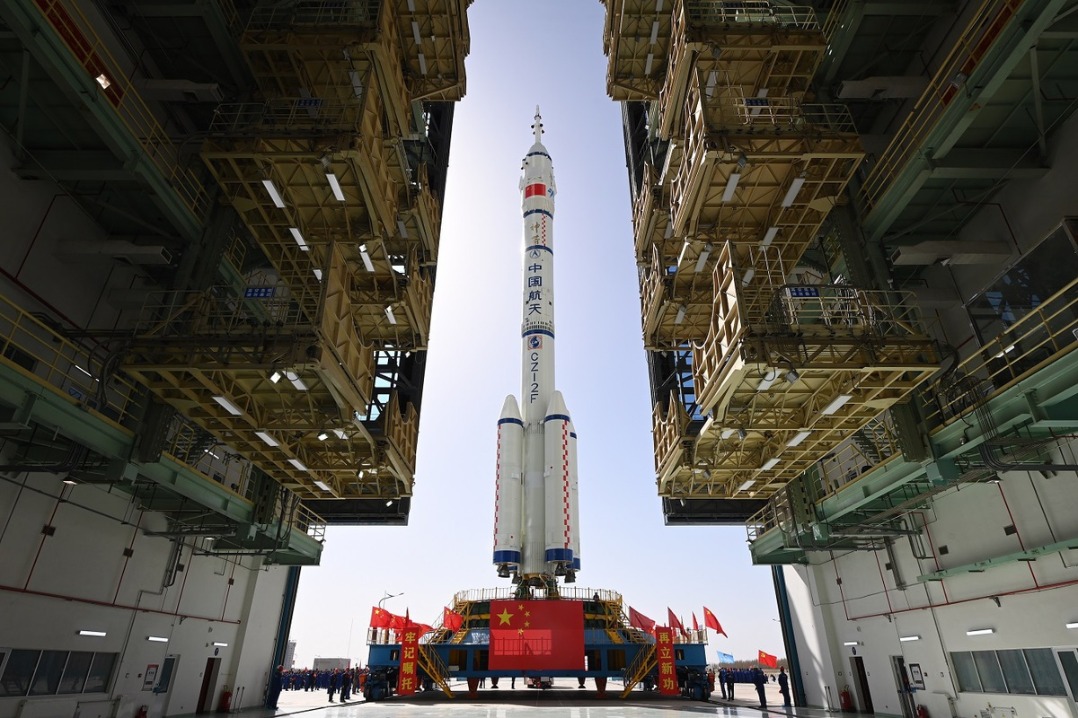Space a new realm for Sino-US cooperation
By Li Zheng | chinadaily.com.cn | Updated: 2019-02-13 10:58

After the successful landing of the Chang'e-4 lunar probe on the far side of the moon on Jan 3, China is planning to launch Chang'e-5, a more advanced lunar probe, later this year to collect samples from the moon.
The Chang'e-4 mission, the first such mission in history, was an important milestone in the lunar exploration program of not only China but also the world. About 50 years ago, the United States' Apollo 11 landed the first humans on the moon, marking a critical step in space exploration. But no human has landed on the moon after 1972. Since Apollo 11, according to the US, effectively ended its space race with the Soviet Union, the Americans abandoned all ambitions to further explore space.
"Project Apollo" did not prompt other countries to join the space race because no country other than the US and the Soviet Union could afford the huge costs. Even the US found it extremely difficult to sustain the project. For example, the cost of launching the Saturn V rocket, the carrier of Apollo 11 in 1969, was nearly $400 million, almost equal to the total budget of the US National Science Foundation that year.
For US, space research is no longer a priority
Today, the situation is radically different. Space exploration is no longer the prerogative of the US and Russia. Apart from the US, Russia and China, India too has worked out an ambitious plan to put astronauts in space by 2022.
Constantly improving manufacturing and new material technologies have remarkably reduced the cost of space launches. The private US company Space X has successfully launched recoverable rockets, and its launch cost per kilogram payload has fallen below $2,000, one-tenth that of a space shuttle launch. And for China and India, the cost of one rocket launch is less than $5,000 per kg.
Another major change helping space exploration is the advancement in 3D printing technology, which now allows astronauts to produce parts and components in the International Space Station and thus reduces the number of supply vehicle launches. 3D printing will play a big role in the construction of a permanent space station on the moon.
These technological advancements have propelled a new wave of space fever across the world. While US President Donald Trump has reactivated the space exploration program that aims to land humans on Mars by 2033, private space companies such as Space X and Blue Origin have used advanced technologies to their full advantage to move ahead in the space race.
For China, building a permanent space station and a rocket launch platform on the moon will be critical to advanced space exploration. Actually, China is moving closer to fulfilling that objective.
Most US media outlets have congratulated China for landing a probe on the far side of the moon. For instance, Jim Bridenstine, NASA administrator, took to Twitter to describe the mission as "a first for humanity and an impressive accomplishment". China, on its part, said that scientists from the two communicated closely before and during the Chang'e-4 launch process.
While the US side informed Chinese scientists about its satellites in orbit around the moon, China shared with the US scientists the longitude, latitude and timing of Chang'e-4's landing. The interaction was in sharp contrast to the tense relations between the two sides in other areas of science and technology. Which means there is huge room for cooperation between the US and China in space exploration.
Cooperation more important in space
Although the US and China have both made great progress in space technologies, they are still in the primitive stage of developing and using space. As of today, neither country is capable of building a new permanent station in space, let alone building one on the moon. But through cooperation and collaboration, which will reduce the cost of space development for both countries, the US and China can aim at more ambitious targets.
China-US space cooperation would likely to prompt more countries to join hands to develop space instead of choosing between China and the US, especially because after the end of the Cold War, international space cooperation has increased.
In fact, the International Space Station launched in 1998 has been operating thanks to the cooperation between the US, Russia, Japan, some European countries, Canada and Brazil. The four major satellite positioning systems — GPS (US), Beidou (China), GLONASS (Russia) and Galileo (Europe) — may also complement each other to provide the most accurate positioning services. And once China and the US engage in a major space project, many other countries will join in and thus take space exploration to a new stage.
Sino-US space cooperation will stimulate the development of relevant industries and bring tangible benefits to the people. Space exploration will set in motion a series of space industries such as manufacturing, agriculture, resources, energy and tourism. These may become new sources of growth for the world economy, promote industrial technologies, and help address some global challenges such as climate change and energy depletion.
And the new products and services so generated will improve people's lives and contribute to social progress.
The author is an assistant research fellow at China Institutes of Contemporary International Relations.
Source: chinausfocus.com























